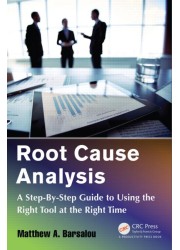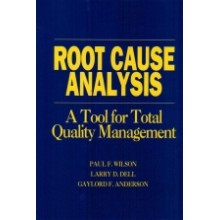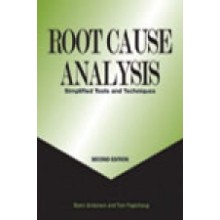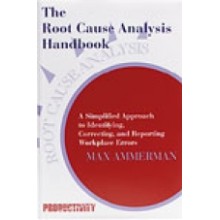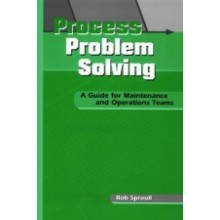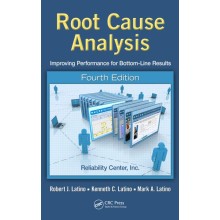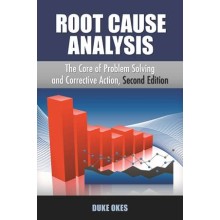Root Cause Analysis: A Step-By-Step Guide to Using the Right Tool at the Right Time
ISBN: 9781482258790
Author: Matthew A. Barsalou
Dispatch Time: 15 - 30 Days
Quantity:
-
Add to Compare
Although there are many books on root cause analysis (RCA), most concentrate on team actions such as brainstorming and using quality tools to discuss the failure under investigation. These may be necessary steps during RCA, but authors often fail to mention the most important member of an RCA team—the failed part.
Root Cause Analysis: A Step-By-Step Guide to Using the Right Tool at the Right Time provides authoritative guidance on how to empirically investigate quality failures using scientific method in the form of cycles of plan-do-check-act (PDCA), supported by the use of quality tools.
Focusing on the use of proven quality tools to empirically investigate issues, the book starts by describing the theoretical background behind using the scientific method and quality tools for RCA. Next, it supplies step-by-step instructions for performing RCA with the tools discussed in the first section. The book’s clear examples illustrate how to integrate PDCA with the scientific method and quality tools when investigating real-world quality failures.
This RCA guide provides root cause investigators with a tool kit for the quick and accurate selection of the appropriate tool during a root cause investigation. It includes an appendix with a guide to tool selection based on the intended use of the tool. There is also an appendix that defines the terminology used in the book.
After reading this book, you will understanding how to integrate the scientific method, quality tools, and statistics, in the form of exploratory data analysis, to build a picture of the actual situation under investigation that will lead you to the true root cause of an event.
The tools and concepts presented in the text are appropriate for professionals in both the manufacturing and service industries.
Table of Contents
INTRODUCTION TO ROOT CAUSE ANALYSIS
The Scientific Method and Root Cause Analysis
The Classic Seven Quality Tools for Root Cause Analysis
The Seven Management Tools
Other Tools for Root Cause Analysis
Exploratory Data Analysis and Root Cause Analysis
Customer Complaint-Related Root Cause Analysis
Example of a Root Cause Analysis
ROOT CAUSE ANALYSIS QUICK REFERENCE
Introduction to Root Cause Analysis
Introduction
Key Points
The Science of Root Cause Analysis
Hypothesis as a Basis for New Knowledge
Key Points
Scientific Method and Root Cause Analysis
Key Points
Experimentation for Root Cause Analysis
Key Points
The Classic Seven Quality Tools
Introduction
Ishikawa Diagram
Key Points
Check Sheet
Check Sheet with Tally Marks
Key Points
Check Sheet with Graphical Representations
Key Points
Run Charts
Key Points
Histogram
Key Points
Pareto Chart
Key Points
Scatter Plot
Key Points
Flowchart
Key Points
The Seven Management Tools
Introduction
Matrix Diagram
Key Points
Activity Network Diagram
Key Points
Prioritization Matrix
Key Points
Interrelationship Diagram
Key Points
Tree Diagram
Key Points
Process Decision Tree Chart
Key Points
Affinity Diagram
Key Points
Other Quality Tools for Root Cause Analysis
5 Why
Key Points
Cross Assembling
Key Points
Is-Is
Not Analysis
Key Points
Following Lines of Evidence
Key Points
Parameter Diagram
Key Points
Boundary Diagram
Key Points
Exploratory Data Analysis
Introduction
Key Points
Procedure
Stem-and-Leaf Plot
Key Points
Box-and-Whisker Plots
Key Points
Multi-Vari Chart
Key Points
Customer Quality Issues
Plan-Do-Check-Act for Immediate Actions
Key Points 8D Report
Key Points
Corrective Actions
Key Points
References
Appendix 1: Using the Tool Kit
Appendix 2: Terminology
Index
Write a review
Your Name:Your Review: Note: HTML is not translated!
Rating: Bad Good
Enter the code in the box below:
Copyright © 2014 Engineering Standards Bureau. All Rights Reserved.
Developed By Zoom Into Web


